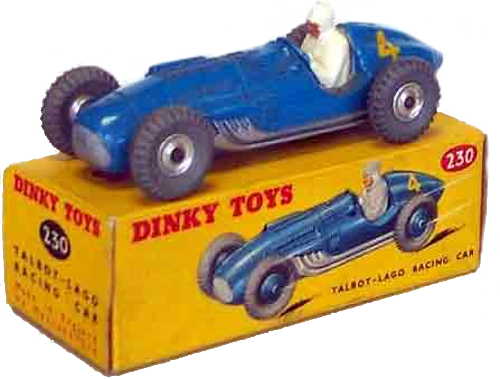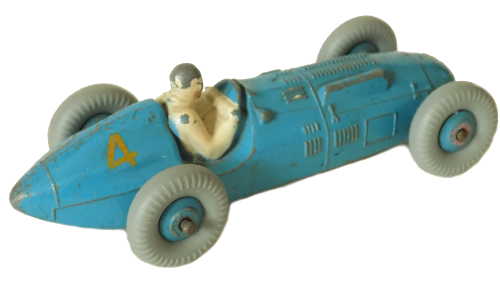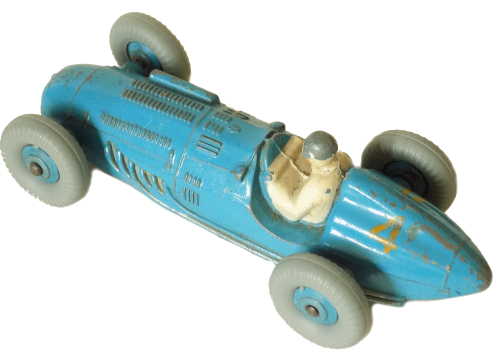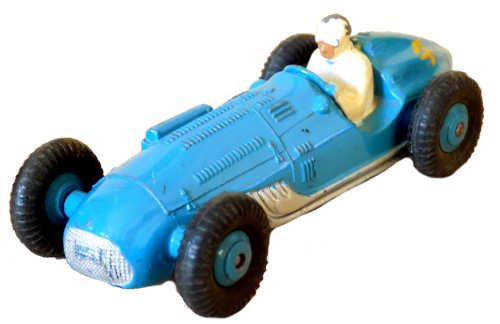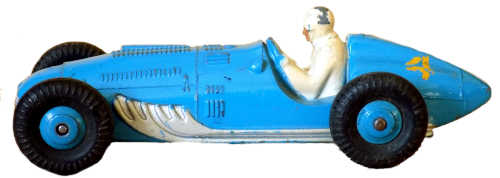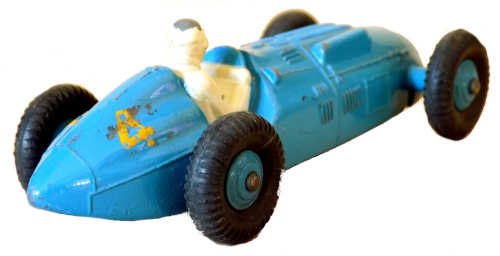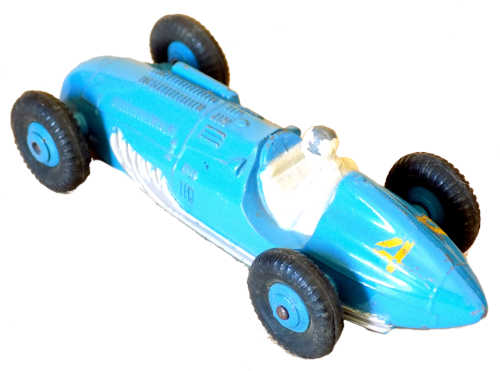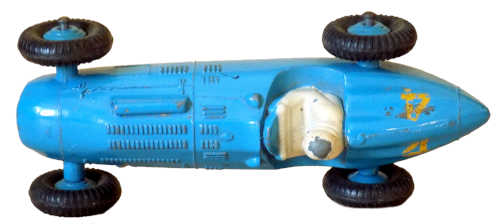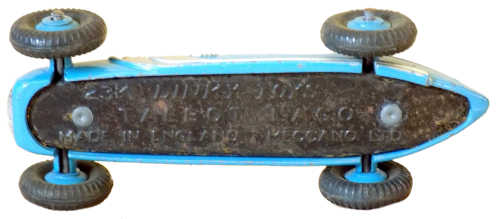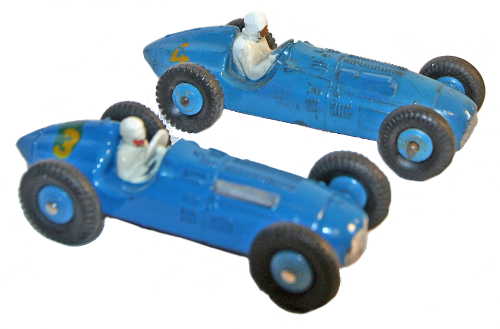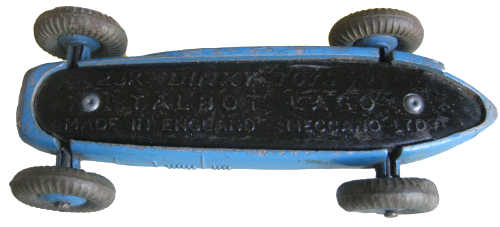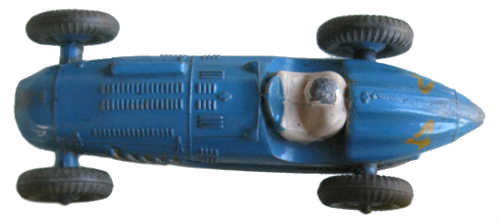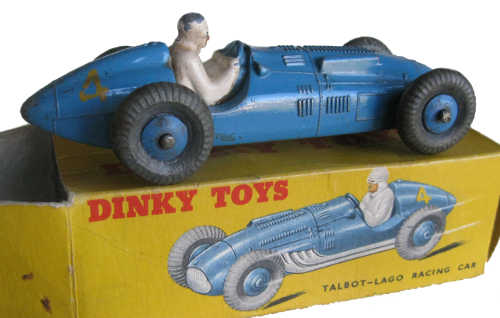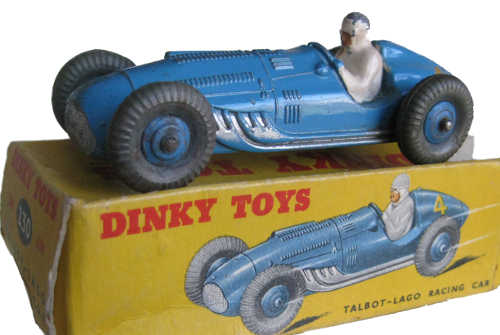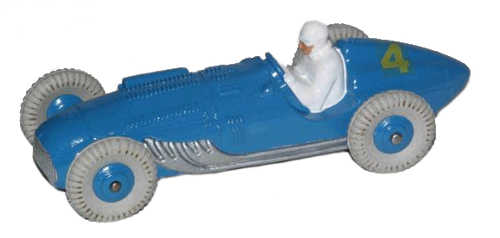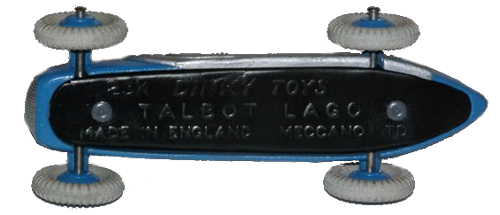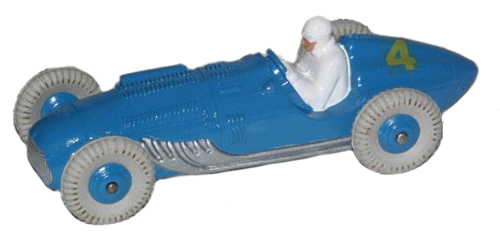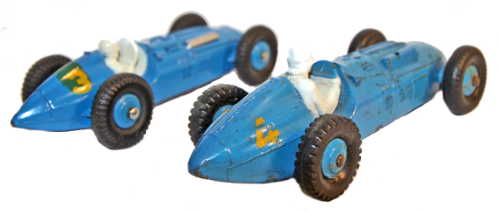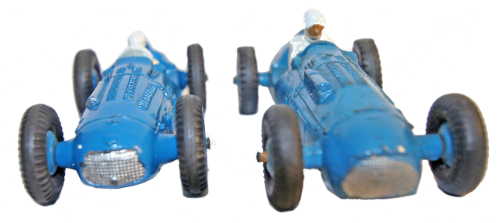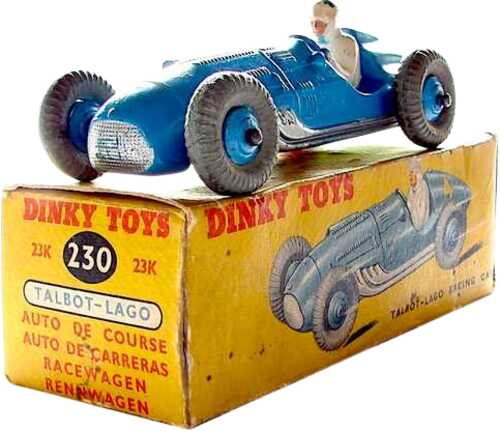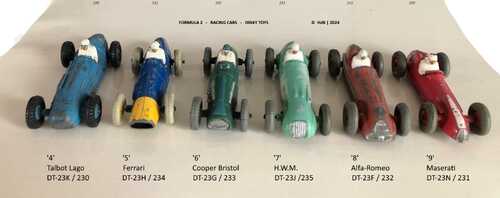Details of Dinky 23K Talbot-Lago Racing Car
The Dinky Talbot-Lago Racing Car.
In September 1953 edition of the Meccano Magazine Dinky Toys announced the introduction of the Talbot-Lago, 23k, which was launch simultaneously in France, where it was French Dinky’s first new model to be advertised in the Meccano Magazine after the Second World War. The Talbot-Lago racing car, 23k.
Costing 2/6 and noted for its fine detail, the 104mm long model, at a scale of 1:38, was in the blue of the French national racing colour. The French version had a vital significance, because it replicated France’s first post-war racing car. However, the smaller French model, 23K, had a length of just 93mm, reflecting its 1:43 scale. The British version carried water-based transfers with the race numbers 1-6; with age, the French spirit-based transfers now leave a yellow film between the numbers. The models had blue, concave wheel hubs and grey 20mm or occasionally black tyres on the British version; black, 11.190mm tyres were on the French model. The 20mm front tyres did not extend beyond the front of the model as they did on the French model, 23H. The British driver adopts a more upright driving position than the lower driving position in the French model. The exhaust, bonnet louvres and bonnet badge are different, with the French version more closely reflecting the actual Talbot bonnet badge.
Dinky and French dinky modelled 23k and 23H, on the Talbot-Lago T26C, single-seat racing car, which had a box chassis, un-supercharged 4.5 litres straight six engine and a 4-speed, Wilson pre-selector gearbox. The chassis and gearbox were derived from Talbot’s 1930s racing cars. The T26C made its racing debut in the 1948 Monaco Grand Prix, finishing second. Driven by Louis Chiron, further achievements followed, including the 1949 Belgium Grand Prix and in a two-seat version, they won the 1950, Le Mans 24 hour race. Louis Rosier and Jean-Louis Rosier drove the car.
Renumbered 205 and 230. The original price was 2/6 . It was finished in blue at 1:38 scale. Released as Dinky 23K in 1953 withdrawn as Dinky 23K in 1959.
Base:
tin plate baseMarkings:
racing numbersModel features:
driverOrigin:
Made in EnglandPackaging:
cardboard boxVehicle make:
Talbot-LagoVehicle model:
T-26CVehicle type:
Formula 2, racing carWheels:
cast ridged hubs, shaped spun hubs, tyres with treadIf you know about this model you can add more detail by email to: diecastplusinfo@gmail.com where you can also send pictures of your models to add to the site.
More models
Related models on this site that may be of interest.
- Auto Pilen 529 Talbot 150
- Auto Pilen 804 Talbot 150
- Corgi 150 Vanwall Formula 1 Grand Prix Racing Car
- Corgi 150S Vanwall Formula 1 Grand Prix Racing Car
- Corgi 151 Lotus XI Racing Car
- Corgi 154 Ferrari Formula 1 Grand Prix Racing Car
- Corgi 155 Lotus Climax Formula 1 Racing Car
- Corgi 155 Lotus Climax Racing Car
- Corgi 156 Cooper Maserati Racing Car
- Corgi 156 Graham Hill's Embassy Shadow Racing Car
- Corgi 190 Lotus JPS Formula 1 Racing Car
- Corgi GS17 Land Rover and Ferrari racing car on Tr
- Dinky 205 Talbot-Lago Racing Car
- Dinky 207 Alfa Romeo Racing Car
- Dinky 215 Ford GT Racing Car
- Dinky 221 Speed of the wind Racing Car Box Set
- Dinky 222 Streamlined Racing Car
- Dinky 225 Lotus F1 Racing Car
- Dinky 23 Racing Cars
- Dinky 230 Talbot-Lago Racing Car
- Dinky 231 Maserati Racing Car
- Dinky 232 Alfa Romeo Racing Car
- Dinky 233 Cooper Bristol Racing Car
- Dinky 234 Ferrari Racing Car
- Dinky 235 H.W.M. Racing Car
- Dinky 236 Connaught Racing Car
- Dinky 237 Mercedes Benz Racing Car
- Dinky 23a Racing Car
- Dinky 23b Hotchkiss Racing Car
- Dinky 23D Auto-Union Racing Car
- Dinky 23f Alfa Romeo Racing Car
- Dinky 23G Cooper bristol Racing Car
- Dinky 23H Ferrari Racing Car
- Dinky 23J H.W.M. Racing Car
- Dinky 23N Maserati Racing Car
- Dinky 23s Streamlined Racing Car
- Dinky 240 Cooper Racing Car
- Dinky 241 Lotus Racing Car
- Dinky 242 Ferrari Racing Car
- Dinky 243 BRM Racing Car
- Dinky 249 Racing Cars Gift Set
- Dinky 32C Mercedes racing Car
- French Dinky 23j Ferrari Racing Car
- Matchbox 19 Lotus Racing Car
- Matchbox King Size K5 Racing Car Transporter
- Matchbox King Size K7 Racing Car Transporter
- Matchbox M6 Racing Car Transporter
- Timpo Toys ? American Star Racing Car
Other sites
Links to external sites that may be of interest. Please report any broken links to the webmaster.
Contributors
Thank you to the following contributors of images and or information for this page.
- Thanks to Carriage and Wagon Models
- Thanks to George's Good Stuff
- Thanks to Huibert
- Thanks to John Morris
- Thanks to Mike Foote
- Thanks to Peter Leach
- Thanks to Santiago Oliver
- Thanks to Walter Herter
